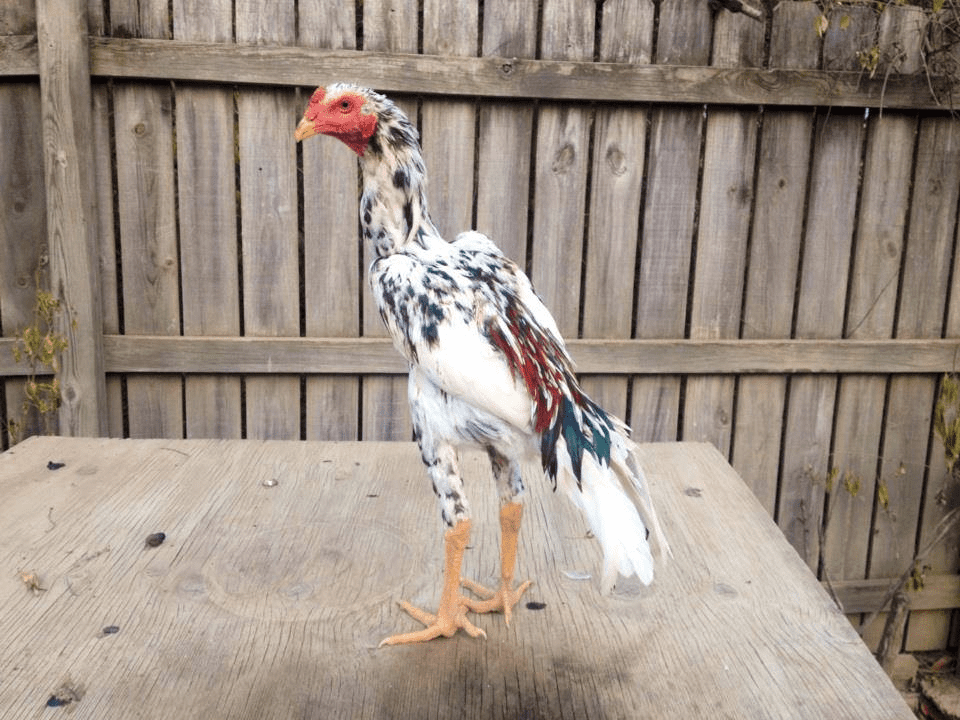Originally bred as a fighting chicken, the Shamo chicken is an Asiatic game fowl from Japan. It isn’t a native of Japan; it was only developed there. Its ancestors were mostly found in Thailand, known as Siam at the time.
Shamo chickens are tall, hard-feathered, and mostly bred as fighting birds. It’s for this reason that the Shamo chicken has grown in popularity across the globe. Even though there are many different game chickens in Japan, Shamo chickens are most renowned for this reason.
Breeders have sought strength and endurance for hundreds of years when breeding Shamo chickens selectively. Thanks to this selective breeding, the modern-day Shamo chicken differs from the original Shamo chickens found in Japan.
Why Raise Shamo Chickens?
Outside of the United States, many flock owners raise Shamo chickens for fighting. In the United States, they are often raised as ornamental birds and sometimes for exhibition. They aren’t often raised for their eggs. While they provide meat, they aren’t considered among the best meat chickens.
According to the Livestock Conservatory, many advantages come with raising ornamental birds. Some of the most common reasons people do it are for ornamental curiosity and show.
Not only do they have a bold attitude, but they also have an upright posture that makes them seem as though they are standing to attention.
Game Chickens
Tough, strong, and aggressive chicken breeds like the Shamo are known as game chickens. They are specifically bred for their fighting capabilities are are often more popular in cultures where cockfighting is revered. While there are many different types of game chickens, the Shamo chicken is highly-regarded.
Ornamental Value
Often viewed as ornamental birds, breeders have placed great value on pure-breed Shamo chickens. They can be used for their eggs and carcasses when not used as fighting birds.
Reasons People Raise Shamo Chickens
In addition to ornamental and exhibition purposes (and in many areas, for fighting) some reasons to raise Shamo chickens are:
They are “okay” for meat
If you are interested in raising chickens for their meat, you can cull Shamo chickens for meat, especially the males. Even though they are technically slow-growing birds, their meat is considered high-quality with quite a bit of fat. The biggest issue with using them for meat is that Shamo roosters tend to be muscular, making their meat tough.
The hens do lay some eggs
For the first few years, Shamo hens will lay eggs. While you may not choose this breed if you are interested in a lot of eggs, (they aren’t among the best egg-laying chickens), they lay around 90 eggs annually.
They are sort of a dual-purpose breed
The thing about Shamo chickens is that they aren’t kept specifically for their meat or egg-laying prowess. This is because they aren’t prolific in either. They are known for fighting.
Reasons to Not Raise Shamos
Some reasons you may not want to raise Shamo chickens are:
Value for money
This breed can be more expensive than other chicken breeds. This is mostly because they are considered ornamental birds with some aesthetic value. There are better chicken breeds to choose if you want to raise chickens for eggs or meat in your backyard.
Aggressive breed
While personalities and temperaments will vary, this is an aggressive breed to raise in backyards. There are better options available that are friendlier and calmer and that produce more eggs or meat. They are not as easy to raise as other chicken breeds.
One of the biggest disadvantages of raising Shamo chickens is that they tend to be aggressive toward one another and other chickens. They don’t make very neighborly backyard flocks and are better off being raised independently. Even then, the roosters must be kept apart, or they will fight to the death.
Egg Laying and Reproduction
Even though the Shamo hen tends to be broody and good at raising chicks, it can’t compare to other prolific layers such as the Rhode Island Red, which can easily produce up to 300 eggs a year.
While the number of eggs produced will vary based on the specific variety, the Shamo hen has been known to produce about 90 eggs yearly. A Shamo hen that’s well fed and cared for can produce up to 200 eggs in its lifetime.
The eggs are often medium in size and light brown. During their egg-laying season, the Shamo chicken has been known to lay eggs 3 – 4 times a week. These hens will continue to lay eggs even during the winter (two weeks into winter). Having light will help them continue to lay.
The hens reach maturity at around 16 weeks, a bit earlier than most. Hens go broody and will take care of their eggs until they hatch though you may want to incubate them yourself so the eggs remain intact.
Shamo Chicken Egg Facts
- Number of eggs per year: 90
- Number of eggs per lifetime: Up to 200
- Egg size: Medium-sized
- Egg color: Light brown
- Number of eggs per week: 3 to 4 in ideal conditions
Shamo Chicken Origin and History
Like most chicken breeds, the origins of the Shamo chicken aren’t entirely clear, but it’s believed to have come from Thailand. This breed was then imported and developed in Japan during the Edo period (1603 – 1867).
These birds became very popular in Japan, where chicken fighting was common. The Shamo chicken breed is naturally gifted and designed for this kind of existence. It has better endurance and a more accurate “strike” when compared with other chicken breeds.
Furthermore, it has a naked heel which makes it ideal for naked heel boxing. Today, the Shamo chicken is mostly bred as an ornamental chicken breed and is distinct from their ancestors in Thailand. Most flock owners don’t raise them for eggs.
By 1940, the Shamo chicken breed had become so rare in Japan that the government enacted laws to protect it from extinction. Somehow, American soldiers still found a way to smuggle the birds into the US after World War II.
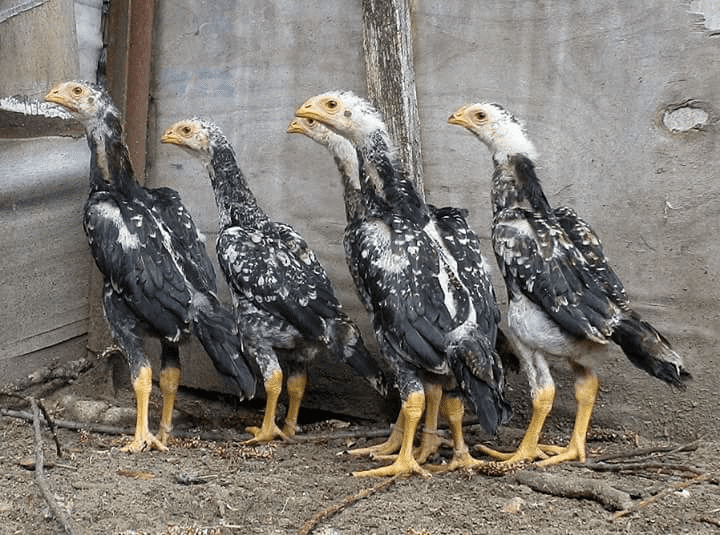
Categories Based on Weight
In Japan, the Shamo chicken breed falls under distinct breeds or categories based on weight. Full-sized birds are known as the O Shamo and the Chu Shamo.
You will also find other breeds such as Ko Shamo, Takido, Ehigo-Nankin-Shamo, Yamato-Shamo, and Kinpa. There’s also a bantam option for this breed known as Nankin Shamo.
Recognized Standards
These birds were then crossbred with fighting cocks mainly found in the South. In 1981, the American Poultry Association officially recognized the Shamo chicken breed as a standard poultry breed.
While the American Poultry Association standard recognizes each variety of the Shamo chicken, in Europe (United Kingdom), only the O Shamo and the Chu Shamo are recognized.
Shamo Chicken Characteristics and Appearance
The Shamo chicken is a rather tall bird. In fact, only the Malay chicken is taller than the Shamo breed. Shamo chickens are easily recognizable by their tall and nearly vertical stature. This eye-catching bird has a rather muscular body, especially in the thighs.
Some of the most common features of the Shamo chicken include:
- Hard, stiff feathers that barely cover the body (in some birds, the feathers don’t cover the entire body)
- Shoulders that are broad and structured
- Close-knit feathers
Other distinctive features make the Shamo chicken breed different from most other farm birds. These include:
- Small ear lobes that are bright red
- While some Shamo birds have small, bright red wattles, the wattle is completely missing in others
- Yellow-colored beak and legs
- Small comb that’s bright red
- A small tail that slopes downwards toward the ground (in some cases, touching the ground)
While the eye color varies depending on the variety of bird, in many cases, they are pearl-colored.
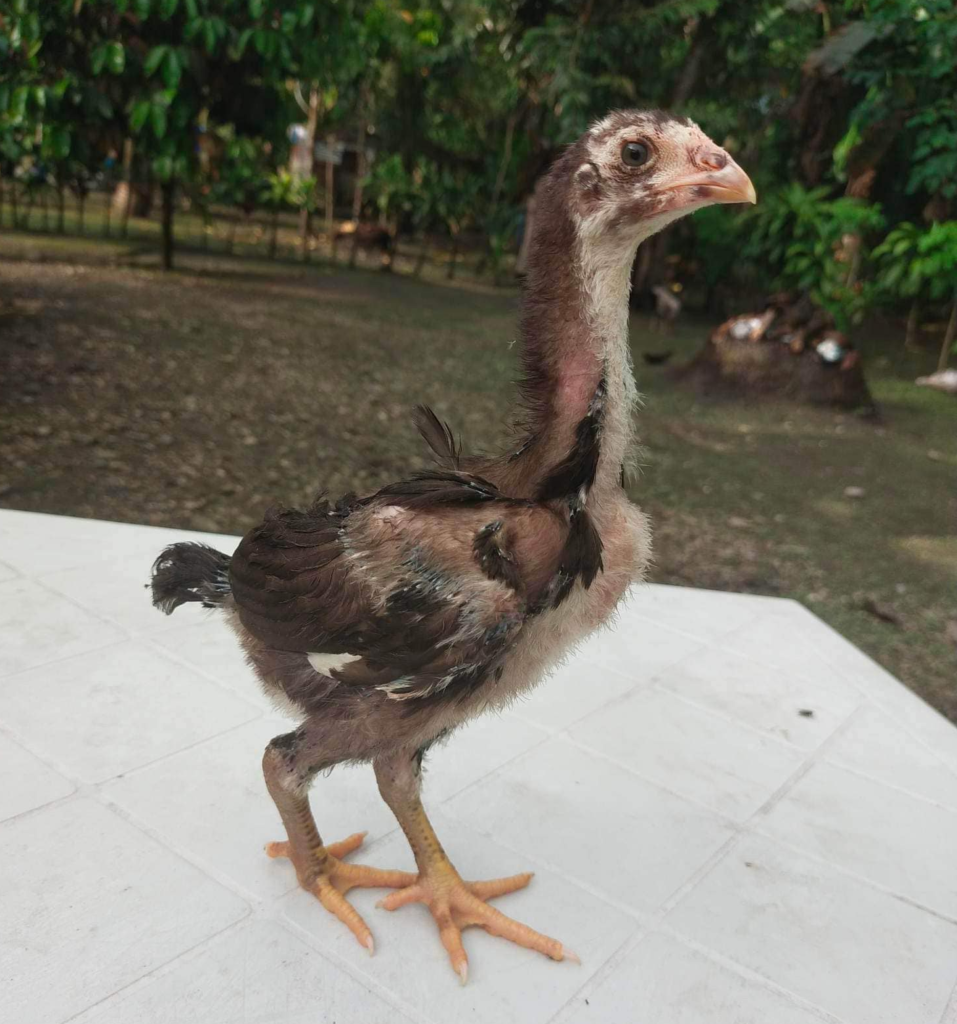
Colors
Each Shamo chicken differs from most other birds thanks to extensive crossbreeding. They come in many colors, but black and red are the most common colors. You will easily find other color combinations, including:
- Black
- Wheaten and white
- Black-breasted red
Shamo chickens look like fighters. Not only do they have big strong wings and short-often not showing and sitting firmly against the bird’s body, but they also have rather broad heads, strong beaks that are curved downwards and overhanging brows over their eyes, which make them look angry.
Weight
They are considered to be medium-sized chickens. In general, their weights are:
- Shamo rooster weighs a minimum of 6 pounds
- Shamo hen weighs around 4 pounds
This weight classification varies within the varieties. Some examples include:
- Chu Shamo rooster tends to weigh 6 – 8 pounds
- Chu Shamo hen weighs around 4+ – 6 pounds
One of the larger varieties is the O Shamo. The roosters are often above 8 pounds, while the hen usually weighs in at just above 6 pounds.
Personality and Temperament
Bred as fighting birds, the O Shamo breed of chicken is naturally aggressive. The roosters are extremely territorial and often get into fights with one another. It’s often best not to have more than one rooster on any Shamo chicken farm at a time. Male chicks will also fight. Be sure to separate them.
Compared to the roosters, the Shamo hens have a calmer temperament. However, by nature they are aggressive and dominant and don’t do well in mixed breeds. It’s best to raise them among themselves. Shamo hens can be quite aggressive toward other chicken breeds in the same flock.
If raising this breed or even one Shamo chicken, be sure to provide good care and create a stress-free environment.
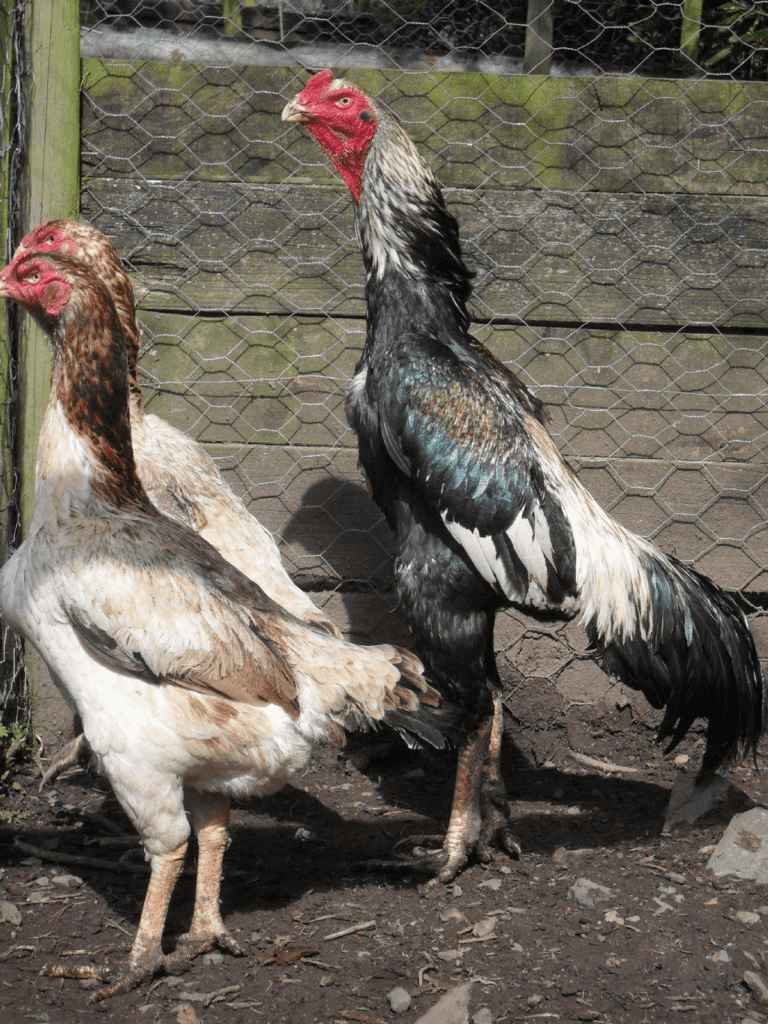
How to Minimize Stress in the Flock
- Have enough space per chicken
- Give chickens the opportunity to free-range and explore
- Provide opportunities for fresh air
- Have plenty of access to chicken feeders and chicken waterers
- Provide several nesting boxes (even though they aren’t heavy layers, some hens may choose a favorite)
- Provide shelter from weather so they remain warm and dry in cold months
It’s important to provide several opportunities for food and water so there is minimal stress in the flock. By nature, there will be chickens at the top of the pecking order and those on the bottom, even among a single-breed flock.
With several chicken waterers and chicken feeders, even if the most dominant have a “favorite”, the other hens will still have access to food and water.
Even though the Shamo chicken breed is very temperamental, they can interact well with humans. Keep children away from them. Children can have unpredictable movements, and the chickens can view them as a threat.
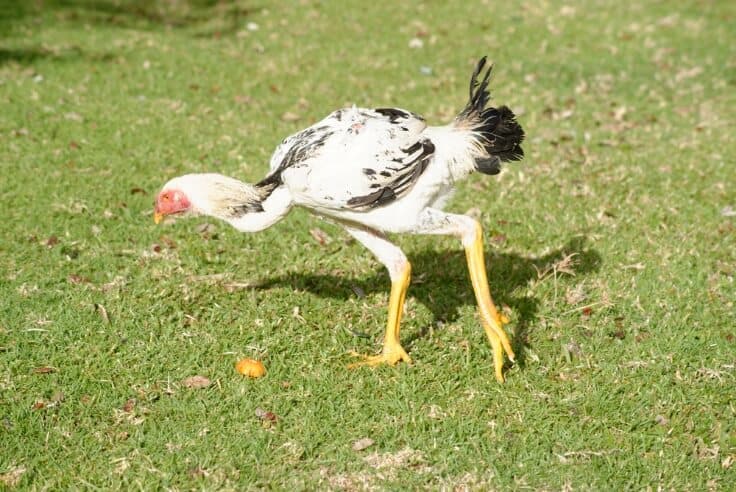
FAQs
Are Shamo chickens rare?
They are considered rare outside of their native Japan.
What are the 7 breeds of Shamo?
There are seven recognized breeds: Nankin Shamo, Tomaru Shamo, Kinpa Shamo, Chibi Shamo, O-Shamo, Chu-Shamo, and Ko-Shamo. Each breed has its own distinct characteristics and appearance, but all Shamo chickens are known for their muscular build and innate fighting abilities.
What is Shamo chicken in English?
In English, Shamo chicken is simply called “Shamo chicken.” Shamo chickens are primarily raised for their meat, which is considered a delicacy in Japan. The meat is typically lean and flavorful, with a slightly gamey taste.
Is Shamo chicken good meat?
Yes, Shamo chickens is considered good but there are other breeds which produce more meat. They were bred for fighting not for meat production.
Can you eat Shamo chicken?
You can eat Shamo chicken meat. Hens will lay eggs but they aren’t heavy layers.
How long do Shamo chickens live?
On average, Shamo chickens can live 8 – 10 years with proper care and nutrition. However, their lifespan may be shorter if they are raised for fighting, as injuries sustained during fights can be fatal.
Do Shamo chickens have any health concerns?
Technically, this oriental game fowl doesn’t have any unique health concerns though injuries from fighting can be an issue.
Like with raising all chicken breeds, flock owners should be aware of parasites such as poultry mites, which can adversely affect their health.
It is important to provide them with proper care, including shelter, nutrition, and veterinary attention when needed to ensure their health and well-being.
Are Shamo chickens easy to find?
One of the main reasons why raising these birds can be profitable is because they aren’t that readily available. Even though they aren’t exactly endangered, not very many breeders have them.
Do they have any special dietary needs?
Bred as a fighting bird, they don’t have special nutritional requirements. They are hardy and tough can survive on whatever they find on the land. However, when raising them, provide proper nutrition and fresh water so they can thrive.
Learn about Maui chickens

